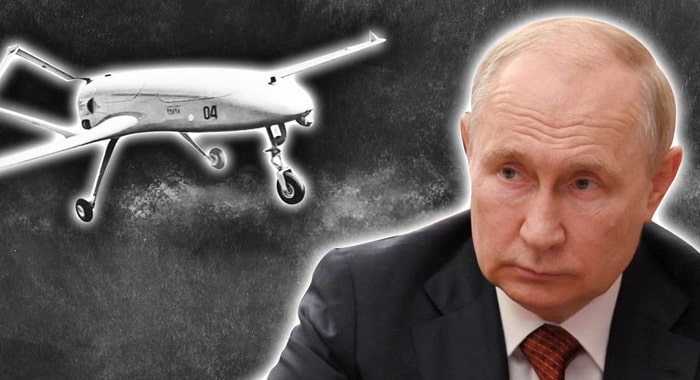In a startling revelation, a senior Russian military official has confirmed that a helicopter carrying President Vladimir Putin came under attack during an unprecedented Ukrainian drone strike, marking a significant escalation in the ongoing conflict between Russia and Ukraine.
According to a report published by the British newspaper The Daily Telegraph, Russian Air Defense Commander Major General Yuri Dashkin disclosed during an interview with state-run Rossiya-24 TV that the president’s helicopter was forced to engage in an “aerial defensive battle” as a result of a large-scale drone attack launched by Ukraine.
The incident reportedly took place last week during President Putin’s visit to the Kursk region, an area that was previously under Ukrainian control. Major General Dashkin stated that Ukrainian forces launched an extraordinary drone assault while President Putin was present in the region, prompting an immediate defensive response from Russian forces.
“The enemy launched an unusual attack using unmanned aerial vehicles while the President was in the area,” said Dashkin. “We had to simultaneously engage in aerial combat and ensure the safe passage of the presidential helicopter.”
Dashkin further claimed that Russian forces successfully intercepted and destroyed multiple Ukrainian drones during the incident. “The mission was accomplished. The drone attack was repelled, and all aerial targets were neutralized,” he asserted.
No casualties or details about President Putin’s exact safety status were immediately disclosed. However, the incident underscores the heightened level of risk and escalation in the conflict, with efforts now seemingly aimed at directly targeting the highest echelons of Russian leadership.
While Ukraine has not officially responded to the Russian claims, the timing of the attack—if verified—suggests that Ukrainian intelligence may have been aware of President Putin’s secretive visit to the frontline area in advance.
The Kremlin had kept Putin’s visit under wraps until after his departure from the region. During the Tuesday visit, the Russian president, dressed in a suit, met with volunteers, local leaders, and acting Governor Alexander Khinstein. He also reviewed the construction of the Kursk-II nuclear power plant—the first such visit to the area by Putin since April 26.
It is believed that President Putin was flying aboard an Mi-17 helicopter, a modern variant of the Soviet-era Mi-8. The Mi-17 measures 82 feet in length and is capable of carrying 30 personnel or four tons of cargo. It is equipped with defensive systems such as infrared jammers, flare dispensers, and armored protection around critical components, designed to counter heat-seeking missiles and small arms fire.
However, experts suggest that such onboard defensive technologies are often insufficient against well-coordinated drone attacks. High-risk flights involving top officials typically require escort helicopters and extensive ground-based air defense support.
This incident highlights a serious challenge to Russian security protocols and raises the possibility that Ukrainian intelligence had access to sensitive information about the president’s itinerary—a potential game-changer in the dynamics of the war.





